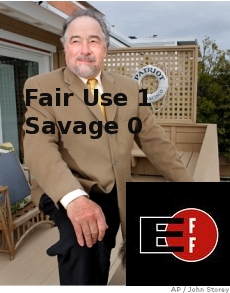Universal Music Corporation (“Universal”) had sent a takedown notice targeting a 29-second home movie of a toddler dancing in a kitchen to a Prince song, “Let’s Go Crazy.” The use of the song was obviously a fair use and, therefore, non-infringing, Lenz responded by suing Universal for misrepresentation under the DMCA. Universal tried to dismiss the case, claiming that it had no obligation to consider whether Lenz’s use was fair before sending its notice. The judge disagreed:
[A] fair use is a lawful use of a copyright. Accordingly, in order for a copyright owner to proceed under the DMCA with “a good faith belief that use of the material in the manner complained of is not authorized by the copyright owner, its agent, or the law,” the owner must evaluate whether the material makes fair use of the copyright.
The court stated that consideration of fair use is necessary to ensure that content owners do not abuse the takedowns:
A good faith consideration of whether a particular use is fair use is consistent with the purpose of the statute. Requiring owners to consider fair use will help “ensure[] that the efficiency of the Internet will continue to improve and that the variety and quality of services on the Internet will expand” without compromising “the movies, music, software and literary works that are the fruit of American creative genius.”
Links:
Judge Rules That Content Owners Must Consider Fair Use Before Sending Takedowns – EFF
Post remixed from EFF’s post







